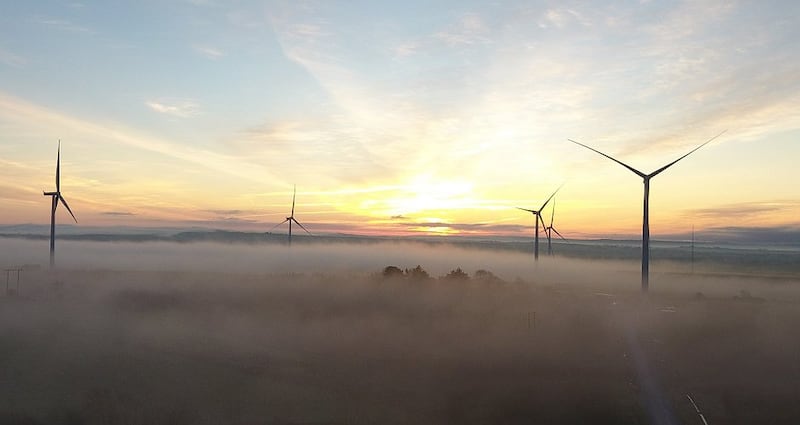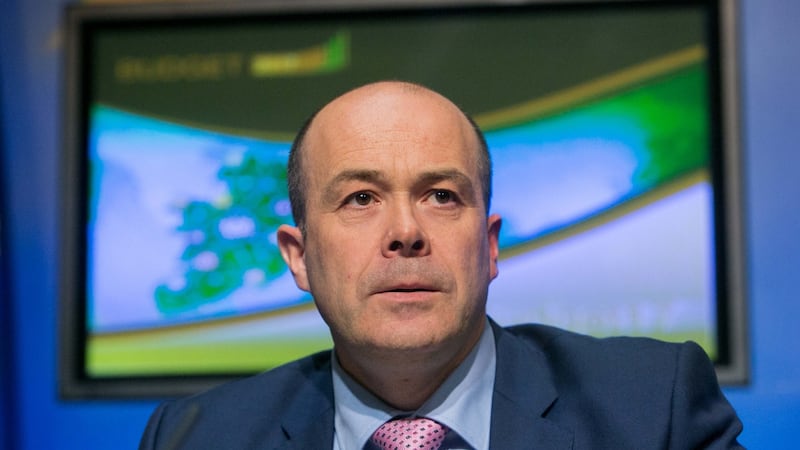All will change, change utterly. The Irish energy sector is about to enter a decade of unprecedented growth, fostered by a series of new supports from the State. The critical element should be the Renewable Energy Support Scheme (RESS), which seeks to boost a mix of technologies, but also requires – for the first time – that green energy brings local benefits.
The scheme, designed to help Ireland meet its renewable pledges up to 2030, replaces the Renewable Energy Feed-in-Tariff, which from 2009 helped the growth of onshore windfarms.
The first priority is to boost renewable energy production quickly, to meet Ireland's European Union target of turning 16 per cent of the State's energy needs "green" by 2020.

So if a solar farm, for example, can deliver quickly, then it will be supported under rules designed to give no one type of green energy an unfair advantage, though there will be limits on the dominance of onshore farms.
Initially, the Government wants to push developer-led projects, not those owned fully by communities; though developers will have to show that they are treating local communities fairly, including with share offers.
Community ownership and community benefits are "key design principles" of the new scheme, says Minister for Environment and Climate Change Denis Naughten.

“If a project wants to be supported [by the scheme], paid for by all customers, it will have to meet certain community-based criteria such as greater and more transparent community engagement and collaboration.
“I am not talking about solar panels for community centres or football jerseys for local GAA teams; I am talking about citizens being able to invest in, and own, and financially benefit from, renewable energy projects,” he says.
Offshore wind and tidal projects will be the key to Ireland meeting 2030 targets. “But all of that cannot be unlocked unless we have a funding stream to support that. The RESS is key to driving that forward,” he says.
The Government “National Energy & Climate Plan”, due under an EU agreement, will lay out how Ireland will decarbonise and ensure that heat and transport needs are met by green-produced electricity, not fossil fuels.
“In the plan, Ireland must set out how it will make an appropriate contribution to EU level targets. As part of this process, we will of course be engaging extensively with stakeholders,” Naughten says.
The next step for the Government is to secure EU approval for the RESS package, which typically takes six to nine months. It is estimated that the first auction will be in the second half of next year.
Microgeneration
Throughout the EU, there is a move away not just from conventional generation to renewables, but also from large-scale generation to “smaller scale distributed generation”.
The emergence of minnow energy producers, feeding in energy from home solar panels, or by other means, into the national grid will be helped by smart meters and other changes.
Naughten’s department and the Sustainable Energy Authority of Ireland (SEAI) have devised a pilot scheme that will target solar PV initially and domestic self-sufficiency.
Later on, there will be help for those wanting to sell energy to the national grid, from solar panels on the roofs of homes, to larger operations run by small businesses and farmers.
Heat
Because Ireland’s population is so spread out, and because it lacks continental-style district heating systems, it will be particularly difficult to cut fossil fuels from a sector that consumes 40 per of energy consumption.
The National Development Plan (NDP) offers future help to replace oil-fired boilers with electric heat pumps, along with solar panels, for at least 170,000 homes.
Naughten has also secured Government approval for a renewable heat incentive for the non-residential sector, though State aid approval from Brussels is required.
Bioenergy/Bord na Mona
Peat-burning in the Midlands is always controversial. The €100 million-a-year support for peat-power generation is to end in 2019, but a transition process for the sector is in train, he says.
A rewetting bogs programme, to restore natural ecosystems that act as a carbon store, is being carried out
Despite the arguments against it, Naughten emphasises that the closure of the country’s three peat-burning power stations and Moneypoint (which uses coal) would not impact on current emissions targets.
The burning of biomass in the Midlands plants is being increased. Edenderry currently fills 40 per cent of its needs this way. Lanesborough and Shannonbridge will follow suit.
The best approach, he believes, is to encourage the growth of a native biomass industry, providing jobs for the 1,500 people directly employed in the Midlands, while also developing local tourism.
Complementing this, a rewetting bogs programme, to restore natural ecosystems that act as a carbon store, is being carried out. No new bog has been opened by Bord Na Móna in the past decade.
Peat-burning will be finished by 2030; coal will be gone by 2025. A new division in Bord na Móna has been set up to drive progress: “This is a transition. We are determined to complete that transition,” says the Minister.
European self-sufficiency
The European Union must become as self-sufficient as possible in energy, not just for climate change reasons but also for energy security and long-term sustainable economic growth.
Imported biofuels are not the answer. “We cannot replace imported oil with unsustainable imported palm oil,” says the Minister, saying it simply transfers emissions to another part of the globe.”
Instead, “second generation biofuels” developed from waste will provide part of the answer, along with using less energy and using it more efficiently, he declares.
Renewables
Electricity generation has made progress on going green. Ireland is on track to get close to its EU target of 40 per cent electricity from renewable sources by 2020. He singles out EirGrid’s achievement of a 65 per cent loading of variable renewable energy on the national grid – something that has not been achieved anywhere else in the world.
We are exploring the opportunity of bypassing the island of Ireland and connecting from the Atlantic sea board directly into the European grid
So far, onshore wind has been the most successful, but things will change in the years ahead, probably after 2022. “Solar and offshore wind are becoming far more cost-effective and cost-competitive.
“There is significant interest now from developers in relation to developing offshore wind energy projects in Irish waters. We have potentially 50 gigawatts (GW) of energy and electricity offshore.
Developments in the Irish Sea, some in the works for years, will come first, following by others in the Celtic Sea and in the Atlantic Ocean proper, "but it's not just wind, it is also wave as well".
Interconnection
The Celtic Interconnector to France will link Ireland to the continental energy market and allow it to sell energy. "But with the huge potential that we have in the offshore of 50 GW – that's not going to be enough. We are now exploring the opportunities of going much further, of bypassing the island of Ireland and connecting from the Atlantic sea board directly into the European grid."




















